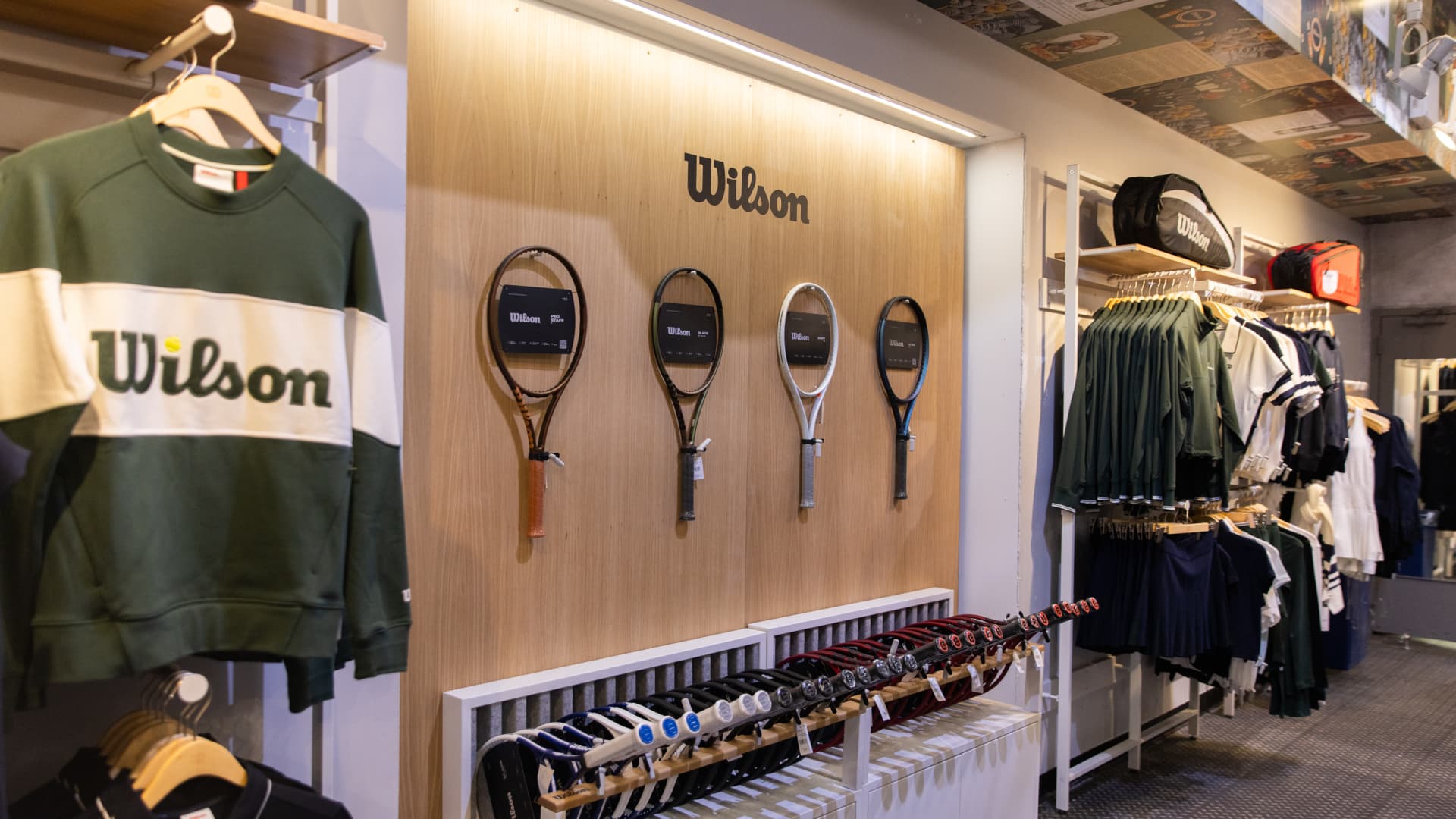Wilson products at Paragon Sports store in the Chelsea neighborhood of New York, US, on Thursday, Jan. 4, 2024.
Jeenah Moon | Bloomberg | Getty Images
Amer Sports, the Finnish athletic company behind the Wilson tennis racket and Arc’teryx, is set to start trading on the New York Stock Exchange on Thursday after raising about $1.37 billion in an initial public offering and pricing its shares at a discount.
The company, which will trade under the symbol “AS,” sold 105 million shares at $13 each. It had originally expected to offer 100 million shares at $16 to $18 each.
The offering values Amer at around $6.3 billion, down from a previous valuation of up to $8.7 billion.
Amer’s decision to discount its IPO came after Federal Reserve Chairman Jerome Powell indicated the central bank isn’t ready to start cutting rates, casting a pall over market sentiment and the floundering IPO market. Wall Street has been eager to see a resurgence in the IPO market after it ground nearly to a halt over the last two years, but recent debuts, including from German shoemaker Birkenstock, have been muted and failed to impress.
Amer runs some of the most recognizable brands in the athletic space. But its balance sheet is saddled with $2.1 billion in debt, and it didn’t post any profits between 2020 and Sept. 2023, according to a securities filing.
In the nine months ended Sept. 30, the company saw $3.05 billion in revenue, up from $2.35 billion in the same period a year ago. It posted a net loss of $113.9 million during the period, higher than the $104.4 million it lost in the year-ago period.
The company’s reliance on China is also growing at a time when tensions are rising between the U.S. and Beijing. Many companies are trying to diversify their market share so they’re not as exposed to disruptions in the region.
In 2020, Amer did 8.3% of its business in Greater China and in 2022, that figure nearly doubled to 14.8%. In the nine months ended Sept. 30, 19.4% of sales came from the region.
Still, nearly half of Amer’s revenue, or 40%, comes from the Americas and 33% comes from Europe, the Middle East and Africa.
This story originally appeared on CNBC

